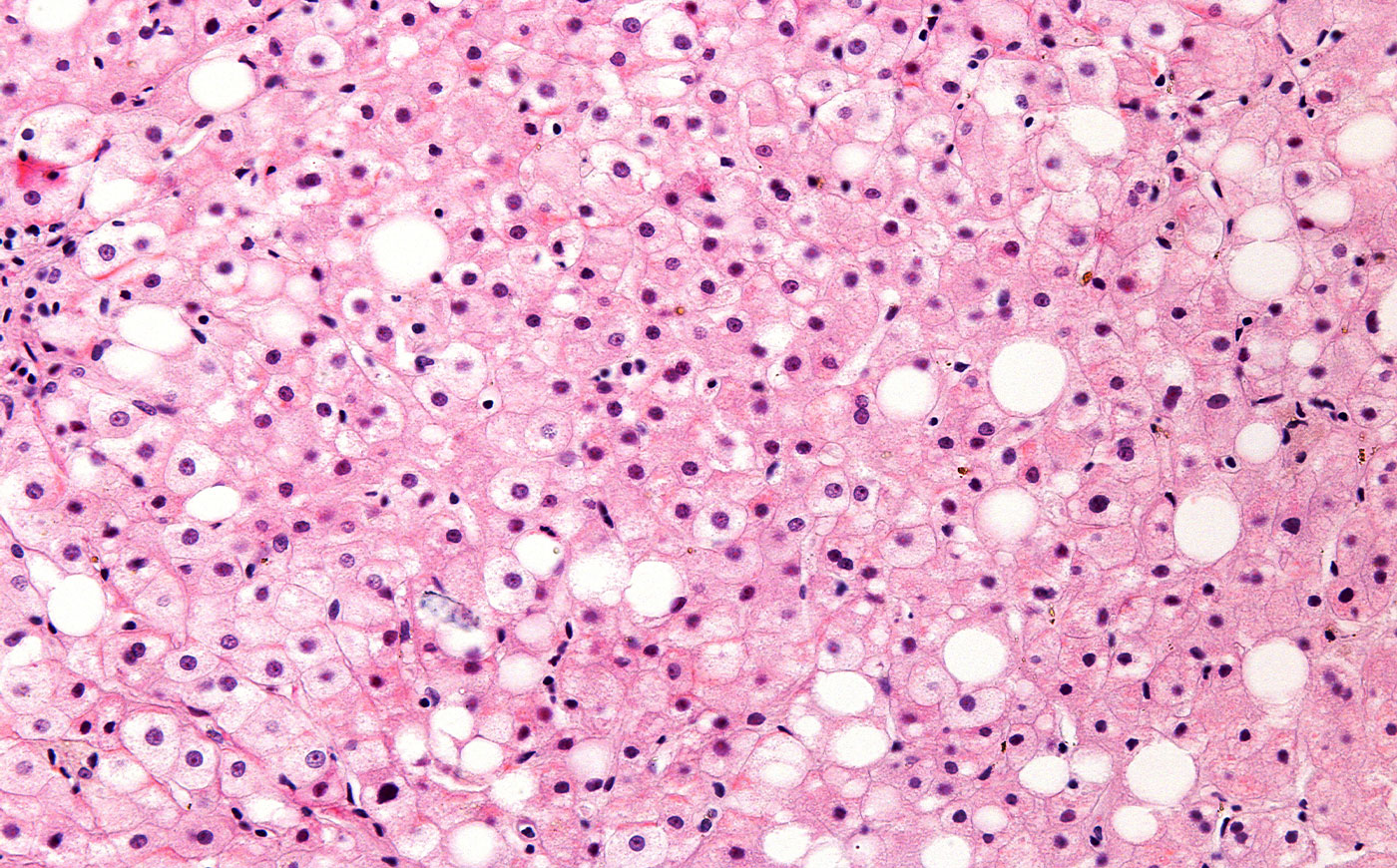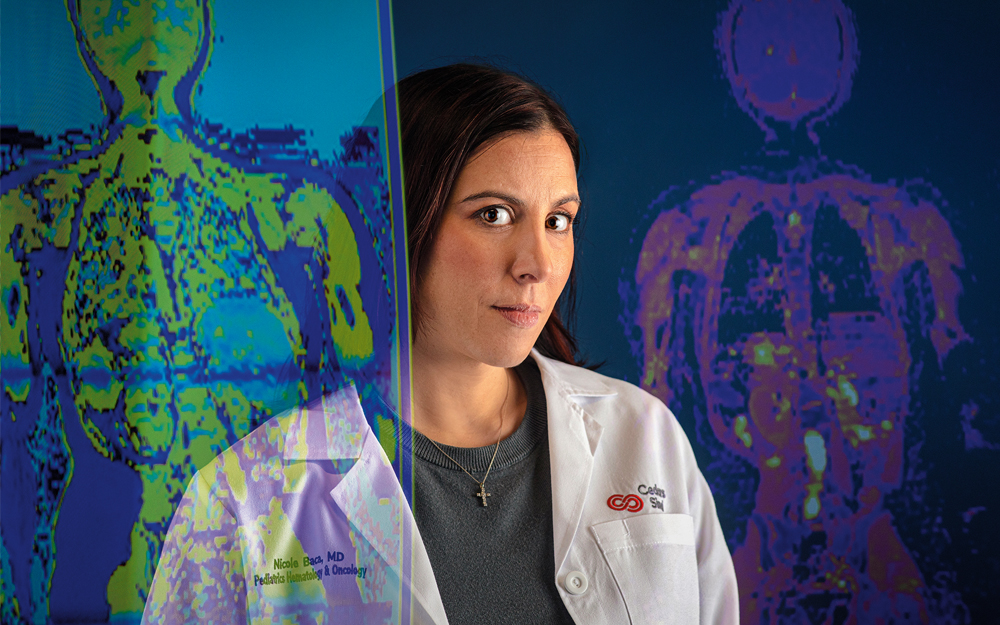New Uses for Existing Treatments: The Practice of Drug Repurposing
Date
September 19, 2023
Credits

Date
September 19, 2023
Credits
Medical providers featured in this article

In Brief
{{cta-block}}
In 2021, Cedars-Sinai oncologist Jun Gong, MD, made a baffling observation that seemed to conflict with the accepted understanding of cancer metabolism. While attempting to starve pancreatic cancer cells by depriving them of amino acids (known to fuel cancer growth and spread), he noticed that cancer cells deficient in glutamine grew even faster.
Perplexed by the paradox, Gong and colleagues wondered if they could evoke an inverse reaction by overwhelming cancer cells with glutamine. They flooded models of pancreatic cancer with high doses of glutamine, paired with chemotherapy, and watched tumor cells shrink.
The investigators were eager to study the concept in patients with pancreatic cancer, and they soon found a way with Endari, a U.S. Food and Drug Administration-approved drug for sickle cell anemia. Endari is a clinical-grade, powdered oral form of glutamine proven safe by rigorous FDA requirements. The drug is thought to reduce oxidative stress in sickle cell anemia, and it is shown to mitigate life-threatening lung complications of the disease.
Glutamine’s possible mechanism of action against cancer is yet unproven, but the Phase I trial of Endari, combined with standard chemotherapy for patients with stage 4 pancreatic cancer, is ongoing today, two years after it began.
With new awareness of opportunities presented by AI, there now are concerted efforts to develop methods to screen existing drugs for new uses.”
—James Turkson, PhD
The Modern, Targeted Approach
The urgent need for safe, effective therapeutic treatments conflicts with the time-consuming process of drug development. A novel drug takes ten years or more to see FDA approval and can easily cost a billion dollars or more. Drug development suffers a high risk of failure—only about 12% of drugs in clinical trials gain FDA approval.
But advances in genomics, proteomics and other methods of high-throughput microanalysis, paired with the emerging application of artificial intelligence in healthcare, is inspiring a more deliberate, directed approach to the practice of drug repurposing. Access to large, well-categorized libraries of drugs and drug mechanisms can be cross-referenced with extremely detailed databases of disease action and manifestation to uncover, for example, a sickle cell anemia drug that could be effective against pancreatic cancer. (In 2022, the FDA approved new indications and dosages for 93 previously approved drugs and 37 novel drugs.)
“With new awareness of the opportunities presented by AI, there now are concerted efforts to develop methods to screen existing drugs for new uses,” said James Turkson, PhD, a research scientist at the Samuel Oschin Comprehensive Cancer Institute. “These new tools can offer new insights into the compendium of tens of thousands of drugs that are already proven safe and approved, even if they didn’t work as they intended.”
In Discoveries: The Human Factor of Artificial Intelligence
Though drug development supposes a unique compound can affect a unique disease by addressing a unique target, drug repurposing relies on the principal that “no drug is 100 percent specific, and maybe the targets aren’t as unique either,” Turkson said.
Drugs can produce more than one effect, and proteins can exhibit the same role in multiple disease states. Turkson and colleagues, including those in the Department of Computational Biomedicine, are actively working to leverage AI platforms that can mine drug databases and patient data to identify new opportunities to address cancer.
“Computational data mining will revolutionize the whole concept of drug repurposing, in addition to the entire drug discovery process,” Turkson said.
In the Newsroom: Cedars-Sinai Charts Healthcare’s Future With Artificial Intelligence
Safety Remains Priority
Neil Bhowmick, PhD, a cancer researcher whose lab studies the intricacies of drug mechanisms, emphasized the safety and efficiency of studying approved drugs for new conditions.
“My purpose for living is to get drugs to address patients needs,” he said. “The primary benefit of repurposing is you already know if there is any toxicity before you even touch the medication. Everything has a side effect—with repurposed drugs, you can manage it from the get-go.”
Nicholas Tatonetti, PhD, vice chair of Operations in the Department of Computational Biomedicine, whose work focuses on identifying drug side effects and drug interactions in understudied populations, expressed excitement about the findings, but cautions that repurposed drugs are often studied at a higher dose, increasing the risk of toxicity and side effects.
“Leveraging a compound for unintended targets is not optimal, since the drug was designed for something specific,” he said. “Often, higher dosing is the tweak, which causes an unstudied impact on organs, like the liver.”
Turkson agreed that safety standards in drug repurposing trials are paramount—and offers the possibility that existing compounds can work on unintended targets at smaller doses, too.
In the Newsroom: Cedars-Sinai Welcomes Biomedical Data Science Expert
The Mission Is a Cure
For its part, the FDA recently established a repository for the reporting of potential new uses for existing drugs. The database might be especially useful for collecting information about drug repurposing efforts for rare or infectious diseases for which there are no approved therapies. Gong said the opportunity to quickly repurpose a drug with known safety is a boon, especially in the study of aggressive disease with limited treatment.
“If you’re doing research not aiming to find a cure, that’s the wrong mission,” he said. “A patient with pancreatic cancer doesn’t have time to wait years for a new compound to be approved. The most exquisite part of our trial is that it’s not just another chemo with its own side effects. This substance is organic and natural—we’re just using an FDA-approved version in higher doses than you get on the shelf.”





